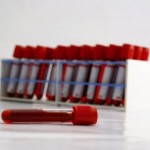Kinds Of Cells And Their Functions
One can liken a healthy human body to a big machine with smaller devices, a flourishing nation with fully-functional cities, or a successful company with departments operated by talented, competitive individuals. The body is made up of different kinds of cells and their functions collectively help fight against disease and infection, increase immunity and maintain growth and stability. Once a specific group of cells are compromised, the body faces threats and hazards, and may eventually shut down if unattended to promptly.
A cell is the primary unit found in a living organism’s body. They are the smallest elements that, when formed in groups, contribute to different functions of an organism. Some organisms are unicellular, being comprised of only one cell, while others, like humans, are made up of millions of different kinds of cells.
It is important to be able to identify these kinds of cells and their functions so that we get in touch more with our body. By doing this, one achieves an increased level of self-awareness, which eventually leads to a healthier lifestyle and an improvement in one’s health conditions.
– Epithelial Cells – Epithelial cells are basically skin cells. They are square and flattened, and are found in three layers: the epidermis or outermost layer, the dermis or the connective tissues, and the hypodermis, which serves as a connector between one’s skin and blood, bone and muscle. In a human body, there are trillions of these kinds of cells and their functions include provision of warmth, regulation of body temperature, protection of body organs from the environment, and recognition of sensation.
– Adipocyte Cells – Adipocyte cells contribute fat to the body. White adipocyte cells are responsible for the release and regulation of leptin and resistin, hormones influencing one’s food intake and weight. Brown adipocyte cells, on the other hand, are considered the healthier kind of fat. These brown fat cells provide heat to newborn infants, who lack the motor skills and psychological abilities to recognize cold and protect themselves from cold. These cells also help burn calories in adult humans.
– Gamete Cells – There are two types of sex cells, each of which is distinct to the two sexes: eggs belong to a female human body, while the sperms are found in males. Once joined through intercourse, these cells are responsible for creating the very foundation of life, resulting in a newborn human being after several months.
– Nerve cells – Simply put, these are neurons. Neurons are a special kind of cell and their functions are bound within the confines of the brain, the spinal cord, and all parts of the nervous system. Sensory neurons send messages to the brain to warn or introduce it to the characteristics of its environment, motor neurons work with the muscles’ movement and coordination, and computation neurons process information to motivate decisions and behavior.
– Muscle Cells – These kinds of cells and their functions are mostly centered on the muscular system of the human body. Skeletal cells make up the bones, cardiac cells make up the involuntary muscles of the heart, and smooth muscle cells line most of the human body’s major organs.






